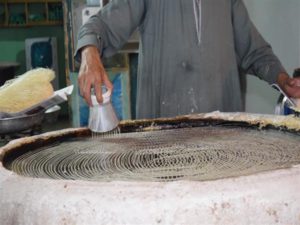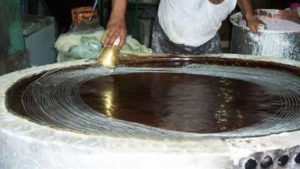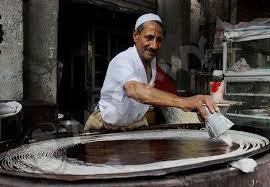El-Konafa
One of the most famous Egyptian deserts. Often referred to as the Dish of Kings, Al-Konafa was greatly associated with the Holy Month of Ramadan. There is no clear definition of the meaning of Konafa, however some references explained it is derived from the Arabic word Kanaf, which means aspics. It also means clutched together. And this is literally how the fine threads of dough look like as they are entangled tightly.
Some historians explain that it was first created for Moawia Ibn Abi Sofian. It was presented to him as a sohour food (Late night snack) to prevent him from being hungry during the fasting hours of the morning in the Holy Month of Ramadan. Others explain that it was a desert found in Egypt during the Mamluk era as well as the Fatimid era. They explain that one of the ways that Egyptians greeted AlMoez L Dien Allah Al Fatemi was by baking AL-Konafa as a desert celebration. And Since Al-Moez first came to Egypt during Ramadan, it was affiliated with the holy month ever since.
Al-Konafa was quite popular desert among the foreign travellers of Egypt especially during the 18th and 19th century where they would refer to it as the Egyptian Macaroni.
Al-Konafa is a popular desert in urban and rural areas and in all social levels, due to its simple affordable ingredients. It is formed of flour that is mixed with water to form a very light and soft dough. The dough is left for no more than half an hour before starting to use it. Mean while the stove is pre-heated. The stove of Al-Konafa is made of metal. Below lies the gas flame and on top of it is a big, usually round, metal tray which is preheated. Then the Kanafany (Al-Konafa Baker) would put the Konafa dough in a Koz (small perforated container). The baker then starts to chart very fine thin vertical lines of Konafa dough. After a few seconds the lines are transformed into Konafa and are collected by hand for they resemble the entangled threads. Currently machines replaced the manual act of Baking AL-Konafa, and one of the major changes that happened is the replacement of the small perforated container.




